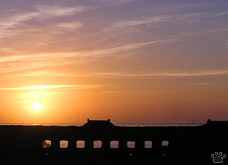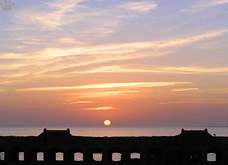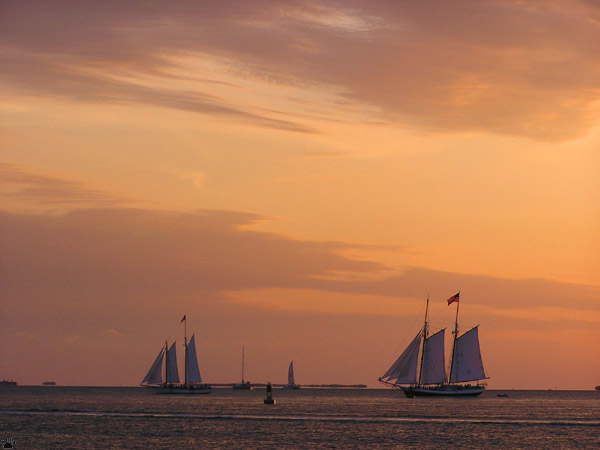
Sunset, Key West. |
Florida, part 2: Islands in The Stream
When they say "the Stream" in Florida, they mean the Gulf Stream. It exits from the Gulf of Mexico, and turns northeast, closely following Florida's east coast. A chain of small islands stretches for over 200 miles southeast from the southern tip of Florida, right into the Stream. They are called Florida Keys, from cayo - a Spanish word for "small island". These islands are a continuation of the rimrock of eastern Florida. Most of them are separated by shallow straights, and the sea around them is also very shallow.
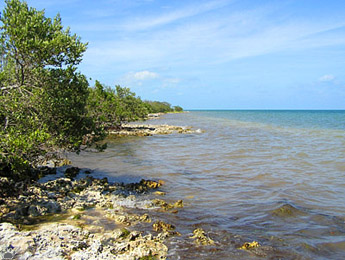
Mangroves and limestone shallows, Elliot Key, Biscane National Park. |
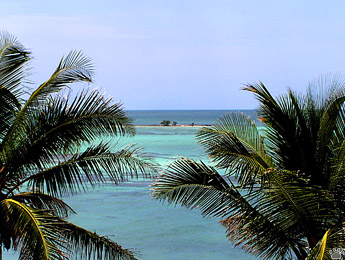
Small offshore key, National Key Deer Refuge. |
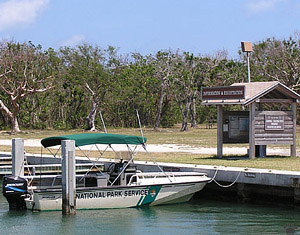
National Park boat pier and dry tropical forest, Elliot Key, BNP. |
Most of the larger keys are now taken over by resort towns, but many smaller ones are uninhabited and protected as Nature reserves. |
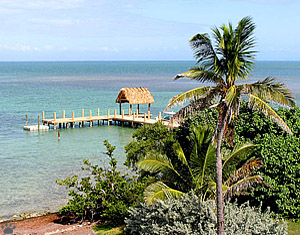
Pigeon Key. |
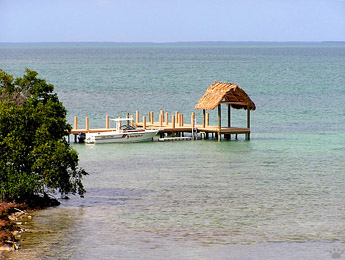
Boat pier, Pigeon Key. |
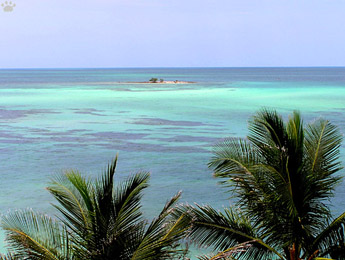
Offshore reefs, NKDR. |

Traveling between the Keys. Off Key West. |
The Keys have been settled by the Europeans earlier than the mainland, and by the late 20th century overfishing had caused many coral reefs to be irreversibly taken over by algae. Still, the islands have Florida's best offshore diving sites. |
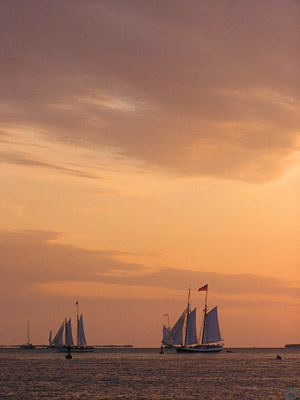
Sunset, Key West. |
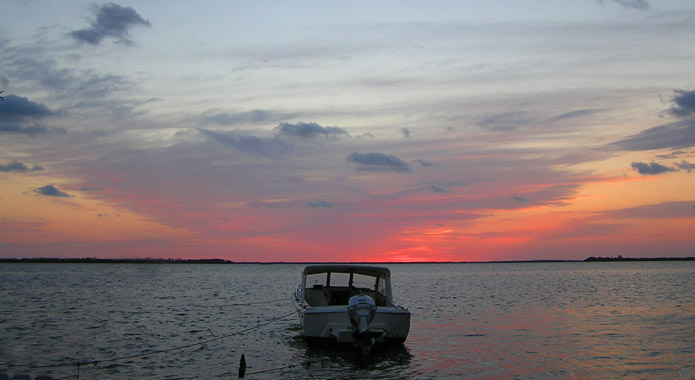
Sunset, Great White Heron National Wildlife Refuge. |
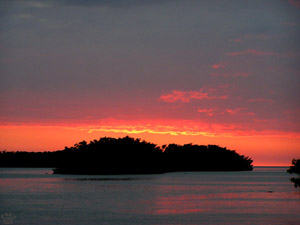
Unnamed mangrove islands in Florida Bay, ENP. |
A highway runs along the island chain. An old bridge (right) between Vaca and Pigeon Keys is one of the best short hikes in Florida. |
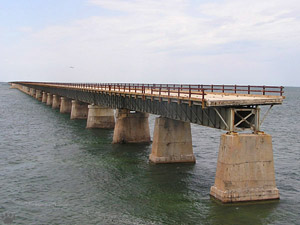
Part of Sevenmile Bridge. |
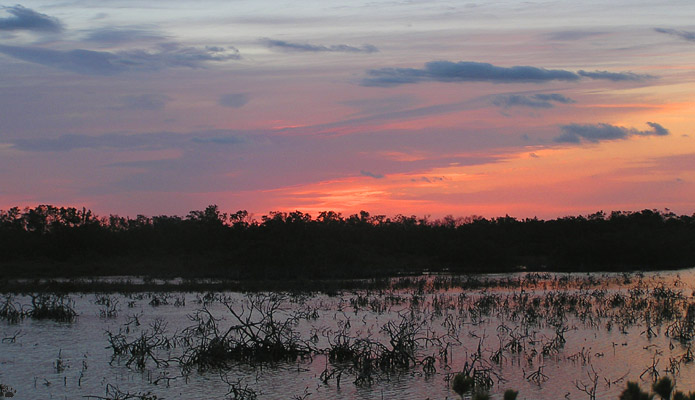
Mangrove shallows, Crocodile National Wildlife Refuge. |
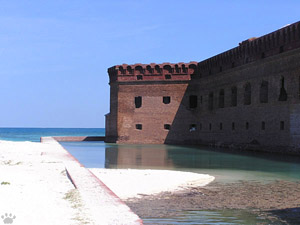
Fort Jefferson (c. 1846-1865), Dry Tortugas National Park. |
The westernmost islands are the Dry Tortugas. The largest of them, Garden Key, is almost completely within the walls of Fort Jefferson. |

Walls and the moat of Fort Jefferson, DTNP. |

Garden Key and Ft. Jefferson, DTNP. |
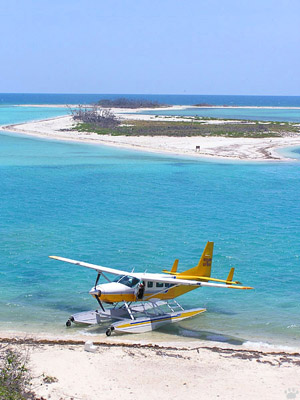
Seaplane at Garden Key, DTNP. |
The name "Dry Tortugas" comes from their lack of natural freshwater. The islands are 109 km (68 miles) from Key West, and can be reached only by boat or seaplane. All seven islands and the surrounding waters are a National park. |
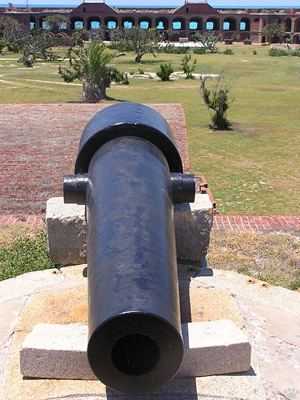
Inside Ft. Jefferson, DTNP. |
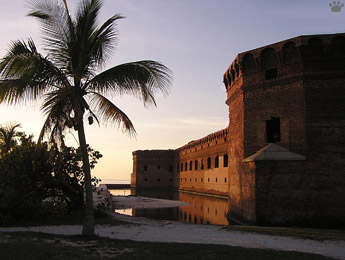
Campsite, Garden Key, DTNP. |
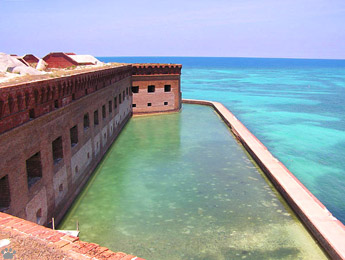
View from the wall of Ft. Jefferson, DTNP. |
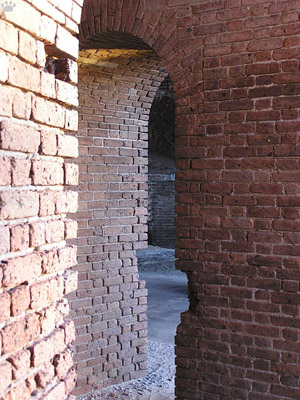
Inside Ft. Jefferson, DTNP. |
The remoteness of Ft. Jefferson once made it a perfect prison camp. Now it's the best camping site and one of very few places with dark night sky in the eastern USA. It is also the largest brick structure in the Western Hemisphere. |
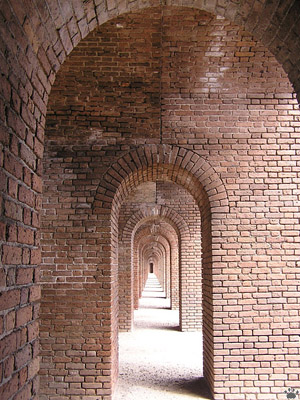
Inside Ft. Jefferson, DTNP. |
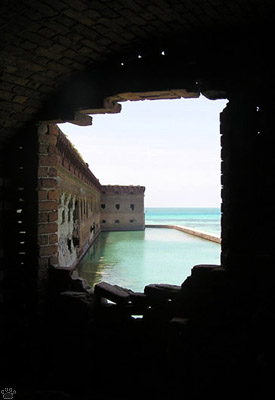
Window view, Ft. Jefferson, DTNP. |
Except for hermit crabs and introduced rats, there is virtually no permanent terrestrial wildlife on the islands, but surrounding waters are very rich. It is the only place on the eastern coast between Maine and Tamaulipas were snorkeling without a boat can be really good. At night, giant lobsters crawl in the moat, nurse sharks patrol the boat piers, and small octopuses look out of cracks in the wall. |
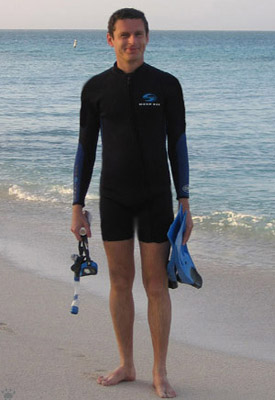
On a snorkeling trip, Ft. Jefferson, DTNP. |
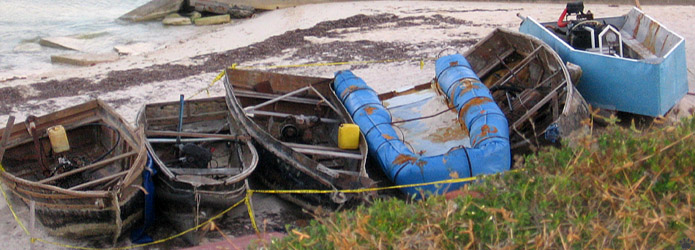
Boats of Cuban immigrants, Garden Key, DTNP. The bright blue one is filled with construction foam. |
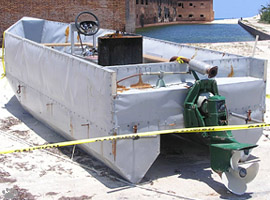
Boat of Cuban immigrants, Garden Key, DTNP. |
Tourists and park rangers are not the only visitors to the islands. Boatloads of Cuban immigrants often end up here after a dangerous crossing of 160 km (100 miles). It's also an important stopover site for migratory birds. |
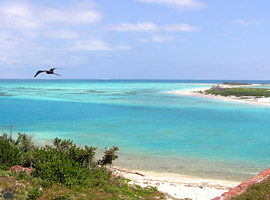
Magnificent frigatebird (Fregata magnificens), DTNP. |
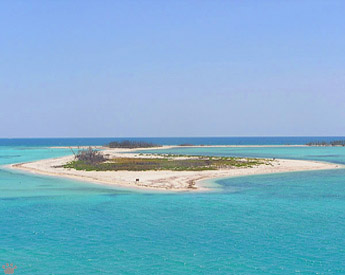
Bush Key and Long Key, DTNP. |
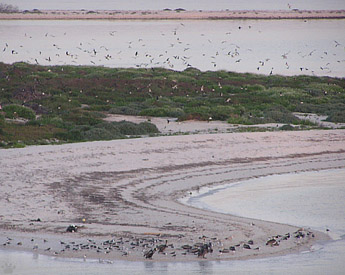
Seabirds flying over Bush Key, DTNP. |
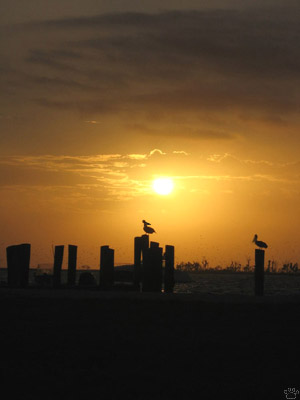
Brown pelicans (Pelecanus occidentalis), DTNP. |
Other islands in the group are mostly off- limits for people because huge seabird colonies form there every spring. There are terns, noodies, boobies, frigatebirds, pelicans, plus a few non-breeding gulls, turnstones, and egrets. |
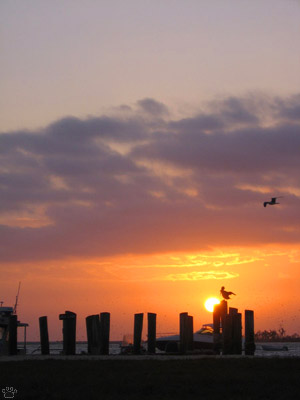
Sunset, DTNP. |
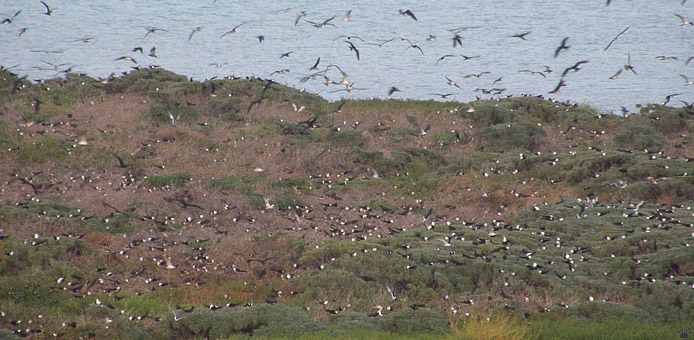
Sooty terns (Sterna fuscata) nesting on Bush Key, DTNP. |
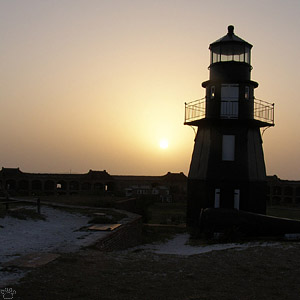
Garden Key lighthouse, DTNP. |
Remote and beautiful, the Dry Tortugas are the best place in the eastern USA to visit with your girlfriend - if she's a bit adventurous and you can organize this camping trip right. |

Patterns of floating turtlegrass (Thalassia maritima), Long Pine Key. |
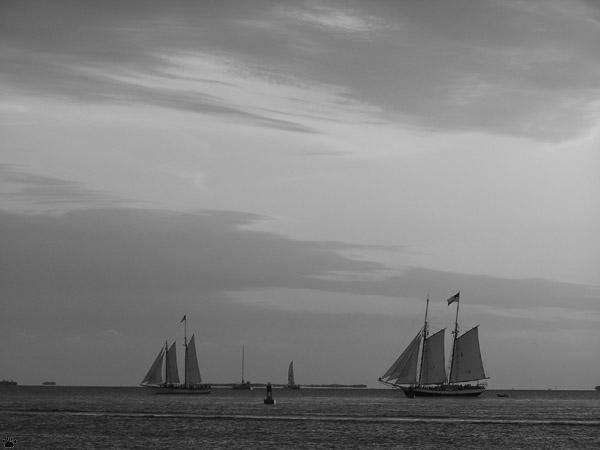
Sunset, Key West. |
Part 3. Trees
Back to Part 1
Home
|






















